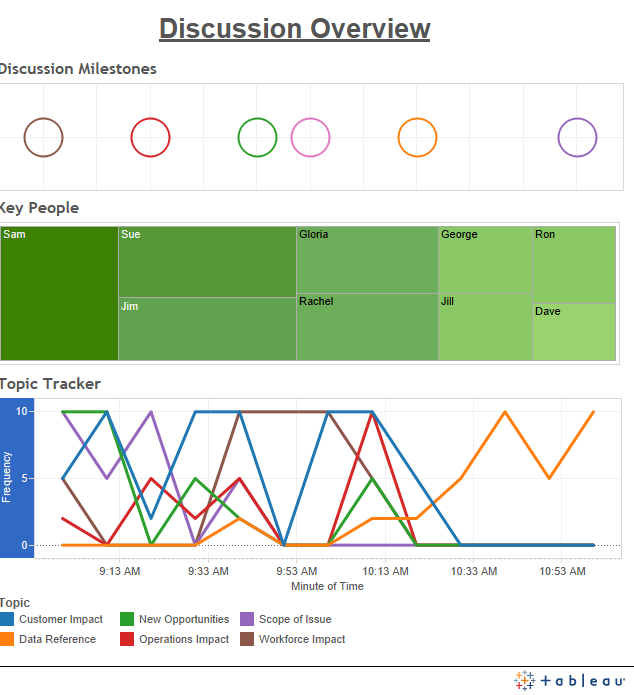Before lifting a Black Hawk helicopter off the ground, the pilot goes through a lengthy written checklist: oil pressure, fuel pump and generator switches, safety harnesses, altimeters — on and on it goes. When I flew Black Hawks in Iraq, I didn’t dream of trying to memorize this list. That would’ve been dangerous. The best way to store and retrieve that information was a notebook.
Similarly, doctors don’t recite every patient’s medical history from memory. That’s what a medical chart is for, and it could mean the difference between life and death. In fact, the Mayo Clinic employs a sophisticated knowledge management system that captures what everyone knows and archives it
Even the transportation industry is getting in on knowledge transfer. Loriann Hoffman, vice president of talent and organization development for the New York City Transit Authority, shared with me that her organization is implementing several knowledge transfer initiatives. Safely moving more than 8 million(yes, million) people by bus or subway every weekday is no small feat, after all.
While your organization may not be responsible for people’s lives, getting the right information to the right people at the right time is still a critical component to your business’s long-term success.
What if the only person who understands a critical part of your company leaves? What if the marketing and engineering teams aren’t talking to each other except casually in the cafeteria?
Are you going to rely on that? Of course not! That’s where effective knowledge management comes into play.
Develop an Effective Knowledge Transfer System
Knowing who knows what, who needs to know what, and how to transfer that knowledge is critical — especially when so much of a company’s worth consists of information. Investing in developing an effective way to transfer knowledge may, in the least, save you some headaches and, at the most, save your business.
Here are some suggestions for implementing a system for knowledge management and transfer in your company:
1. Make it formal. While water-cooler banter is better than nothing, you need consistent, clear processes and tools. As an aviator, I’m partial to lists.
My team creates documents that clearly outline how a process works. We also use checklists and sample templates to ensure that following the process is easy. This increases the confidence of the team members who know that they’re not expected to just “figure it out” when the time comes. Even something as simple as taking notes during meetings and sharing them will keep your employees in the loop.
2. Create duplication. I’m not suggesting that you need two people for every job, but you do need to plan for the worst. Cross-training can mitigate the risk of a key person leaving with a head full of knowledge. Ensure that there are at least two people who can step in during an emergency.
For example, imagine a football team. If the quarterback is injured, another player has to step into that position. But what if no one has practiced that role? Your team probably wouldn’t win the game.
3. Train, train, train. By providing your team members with formal training opportunities, you ensure that you have duplication of skills in the system. However, if you don’t have the resources for formal training, you can try this simulation: Remove a key person from the system temporarily so the team can see what happens. If things fall apart quickly, people will be eager to figure out how to prevent that failure from happening in the future.
For organizations that have effectively transferred knowledge to others, these situations present opportunities for employees to put their knowledge into practice and build their confidence.
4. Use systems. Technology can capture key information for later generations to use. They shouldn’t have to relearn what others discovered. By standing on the shoulders of those who have come before, newcomers can take the ball and run with it rather than spinning their wheels rehashing the same ground that’s already been covered.
5. Create opportunities. Set up informal gatherings where team members can exchange information and develop networks organically. Develop communities of practice so employees can work together to find and share information. This is a great way to capture and share knowledge with a broad audience.
6. Be smart when using consultants. While a consultant can be a valuable asset, keep in mind that they’ll leave after the work is through. Make sure you plan to have their knowledge transferred to internal personnel so you can carry on once they’ve departed.
For any of these practices to make a real difference in your business, you have to communicate the importance of knowledge transfer, explain how it will be done, and, most importantly, practice it yourself.
If you can do that, knowledge transfer will be a key resource and differentiator for your organization. By continuously spot-checking to make sure the right knowledge is being captured and shared, your organization can leap ahead of competitors and seamlessly transition during the departure of key personnel.
On top of that, your employees will be more engaged in their work and have a more in-depth understanding of the systems around them. When your employees feel confident in their ability to step in and help, the different parts of your organization will move together effortlessly. With effective knowledge transfer, your organization will be healthier and happier overall.
This article originally appeared on Forbes












